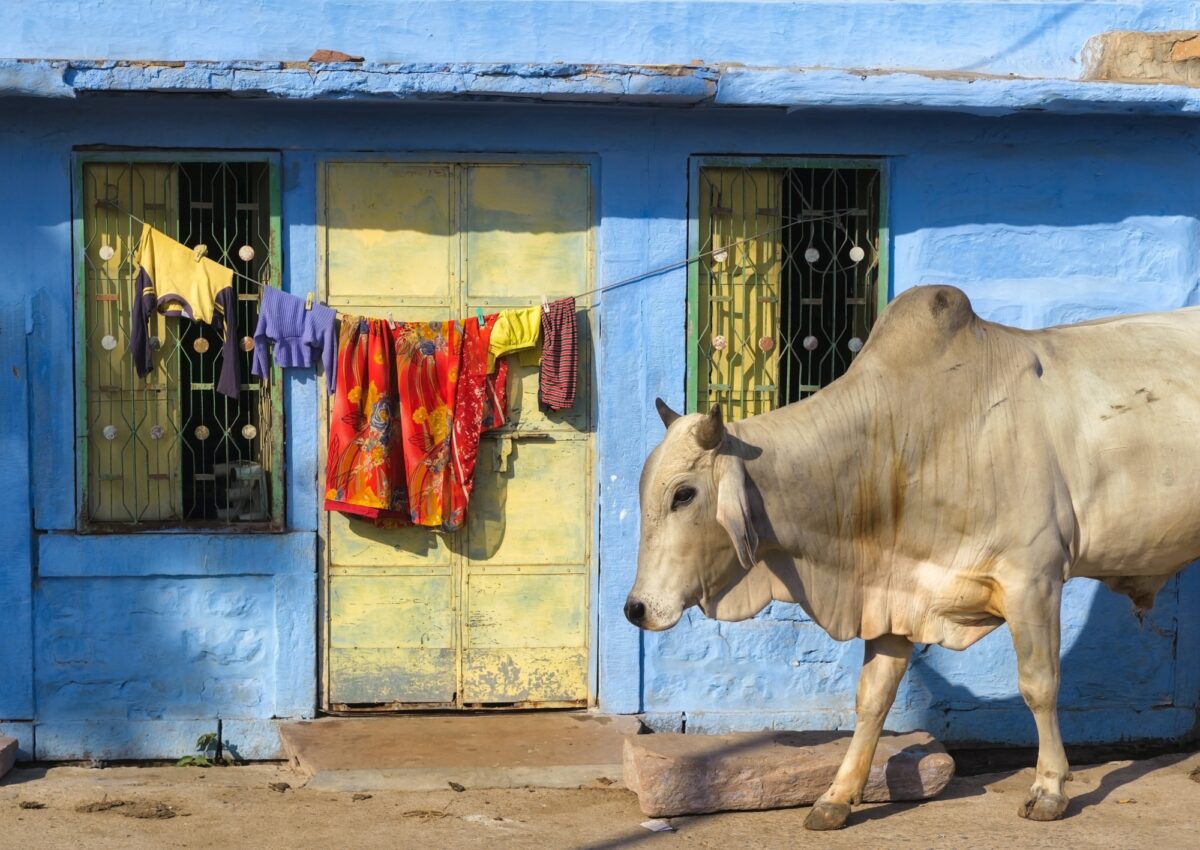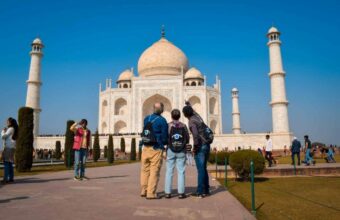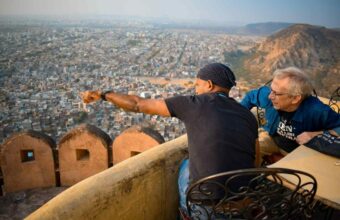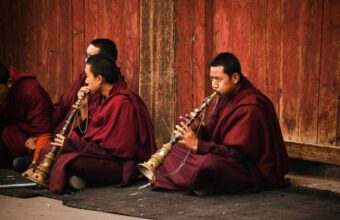What to see in Jodhpur
Blue hues in Rajasthan's second city
Known as the Blue City, Rajasthan’s second largest city is dominated by the formidable 15th century Mehrangarh Fort. Palaces, citadels and cenotaphs set in lush gardens surround Jodhpur, but it is the iconic shade of blue that gives it its identity.

Highlights
For most, a visit to Jodhpur begins and ends with the towering Citadel of the Sun called the Mehrangarh Fort. Founded by King Rao Jodha of the Rathore clan, the 15th-century fort is the symbol of the city, which tumbles down in vivid shades of blue below the fort.
While Mehrangarh Fort and Umaid Bhawan Palace dominate the landscape of Jodhpur, it is fascinating to take a walk through the lanes of the Old City. The Old Market Square is dominated by a towering 19th-century clock tower called the Ghanta Ghar. Soak in the atmosphere as you walk around the market, shopping for local shoes called Jodhpuri Mojari, trying street food or searching for Rajasthani textiles.
Set in the Thar Desert, Jodhpur is a favourite destination for film-makers, with both Bollywood and Hollywood films filmed here.
Mehrangarh Fort
One of the largest and best maintained forts in India, Mehrangarh was built in 1459 by Rao Jodha, the founder of the Marwar Kingdom and the city of Jodhpur. Standing on a rocky outcrop, the fort is 410ft above the city, encircled by walls and surrounded by gates.
There are several palaces, courtyards, temples and cannons inside the fort, which offers great views of the blue-clad city below. There are seven entrance gates, of which two — Jayapol and Fattehpol — were built by different rulers to commemorate their military victories. It’s about a 300m walk up through the hills to Mehrangarh from the Old City. If you’re feeling lazy, you can take an autorickshaw up the winding road.
On entering, you’ll see the fort’s old entrance (Loha Pol) up ahead. Inside, look out for two sets of small handprints on the wall. These are the sati marks of royal widows, who committed ritual suicide on the funeral pyres of their husbands.
The fort’s museum houses artefacts depicting royal life, with displays of weapons, costumes, art, paintings, palanquins and turbans. Don’t miss the Daulat Khana gallery, which houses a collection of Mughal period art and the Chamunda Mata temple, which is dedicated to the patron deity of the Rathore clan.
The desert rock Rao Jodha Park, located at the foot of the fort, gives an introduction to the flora and fauna of desert life.
Umaid Bhawan Palace
One of the largest royal residences with 347 rooms, Umaid Bhawan is still a private residence to the royal kings of Jodhpur. Built in 1946, there are three parts to it — the royal residence, a museum and a luxury hotel.
Construction began in the 1920s when the city was going through a severe drought and the palace became a source of employment to many people. Located on the outskirts of the city atop Chittar Hill, the Palace is made of marble and golden sandstone in the Indo Deco style, with ornate rooms and grand courtyards. The museum displays some of the treasures of the royal family including a private collection of classic and antique cars.
Jaswant Thada
Drive a little distance from Mehrangarh Fort to see this marvel in white — Jaswant Thada. A memorial built for King Jaswant II by his son Sardar Singh in 1899, it stands shrouded by trees and surrounded by gardens. The mausoleum is carved out of marble and was a burial site for the kings of Marwar. Look out for portraits of Rathore rulers and the odd memorial to a peacock that flew into a funeral pyre.
Mandore
The former capital of the Rathore clan lies in ruins amidst a beautiful garden filled with a fort, cenotaphs, temples, rock terraces and sculptures. Don’t miss the cenotaph of Maharaja Dhiraj Ajit Singh, which combines Jain and Buddhist architecture. This chattri also commemorates the ritual suicide of his 64 queens and concubines, who threw themselves on his funeral pyre in 1724.
Located 9km from Jodhpur, visit for the Hall of Heroes (dedicated to folkloric characters), the Temple of Gods and the many monkeys roaming around.









